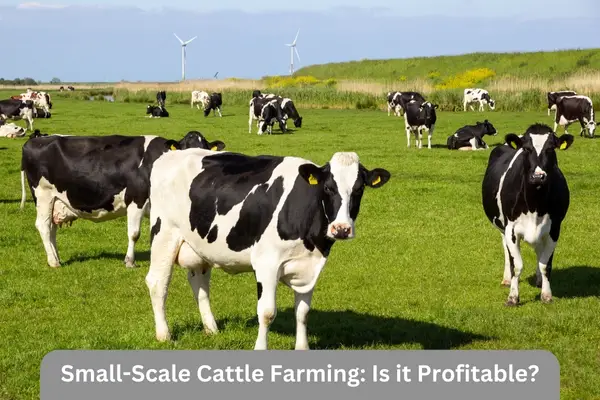Small-Scale Cattle Farming: Is it Profitable?
Cattle farming has long been a staple of rural economies around the world. However, with rising costs and consolidation into large factory farms, many small-scale cattle farmers wonder if running a modest operation can still be profitable today.
In this blog article, we’ll explore the economics, costs, profit potential, and best practices for small cattle farms in detail to see if small-scale cattle farming can truly pay off.
Defining Small-Scale Cattle Farming
First, what constitutes a small cattle farming operation? There’s no definitive threshold, but the USDA generally considers farms with less than 100 cattle as small-scale.
These typically range from backyard hobby farms with just a few animals to more serious commercial enterprises with 50-100 head of cattle.
Small cattle farms emphasize quality of life over high volumes and profits. Many focus on specialty, organic, or grass-fed beef that offers premium prices. This path provides an alternative to industrial beef production in feedlots.
What are the Startup Costs?
Starting any new business requires significant capital outlay at first, and cattle farming is no exception. The #1 cost lies in acquiring land and preparing adequate fencing and facilities. Buying cattle and equipment also adds up quickly.
Total costs often reach 6 figures easily, but this wide range outlines budgets for getting started:
- Land: $20,000 – $100,000+
- Fencing & Facilities: $15,000 – $60,000
- Cattle: $40,000 – $100,000
- Equipment (trucks, trailers, ATVs): $15,000 – $50,000
Annual Operating Costs
Once up and running, cattle farmers face regular expenses, including:
- Feed: $30 – $75 per animal
- Veterinary Care: $15 – $30 per animal
- Transport & Marketing: $25+ per animal
- Repairs & Maintenance: $5,000+
- Utilities, Insurance, Taxes: Variable
With even a 50-cow herd, costs can range from $80,000 – $200,000+ each year. Careful budgeting and finding economies of scale is crucial. We’ll analyze how farmers make this work next.
Revenue Streams for Cattle Farmers
Income for cattle farms comes predominantly from selling grown cows for beef. Average sale prices range widely depending on breed, markets, and farm reputation. Small grass-fed or specialty breed cows can sell for $1500+ while conventional cattle may only fetch $500 each.
In addition to beef cattle sales, other income opportunities include:
- Breeding: Selling bull semen, embryos, calves
- Dairy: Selling milk, cheese, butter
- Byproducts: Leather, fertilizers
- Agritourism: Farm tours, tastings, lodging
These secondary channels provide valuable supplemental revenue. We’ll highlight how to leverage them later on.

The Potential for Profit
Generating consistent profits hinges on both solid revenue per cow and tightly controlling costs. Well-run small farms find possibilities through:
1. Specialty Beef: By focusing on premium grass-fed, organic, heritage or Angus beef, small farmers can earn over twice the prices per animal compared to conventional markets. Higher margins counteract higher costs.
2. Sustainable Scale: Farms with 50-100 cattle enjoy maximum productivity without losing efficiency. This provides sufficient income without bloating expenses.
3. Pasture-Based: Utilizing rotational grazing minimizes feed costs while supporting soil health and animal wellbeing. Lower overheads boost profit margins.
4. Direct Marketing: Selling beef shares and cuts directly to consumers can return 3X more per cow vs commodities markets. Control your own pricing and relationships.
5. On-Farm Processing: Investing in your own USDA-approved meat processing equipment allows farmers to harvest animals, produce cuts and sausages, and directly sell premium processed beef. This captures more downstream value while providing services in demand by other small regional farms as well.
6. Diversified Income: Cattle provide more than just beef. Every cow presents opportunities for breeding stock, dairy production, fertilizer sales, farm tours, tastings, and lodging that supplement operational income considerably.
Following sustainable practices, direct marketing premium products at efficient scales to localized customers enables well-run small cattle farms to sustain profits between $25,000 to $100,000+ on modest herds.
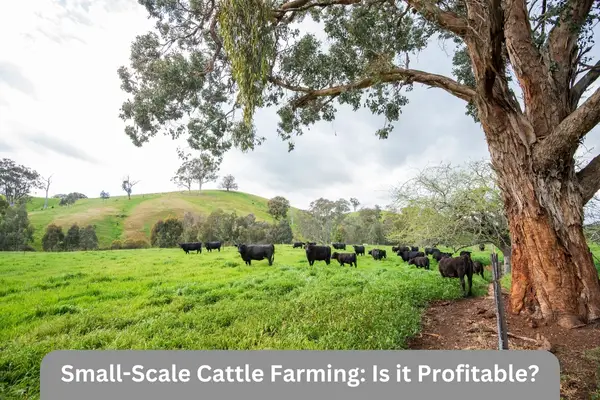
Getting Started with Your Own Small Cattle Farm
After exploring the costs, profit potential, and best practices for operating a successful small scale cattle farm, you may be ready to start planning your own operation.
But transforming pastures and ambition into a smoothly running, profitable cattle farm takes careful consideration. Follow this comprehensive guide to bring your cattle farming dreams to reality in a sustainable way.
Choose Your Farm Location
Selecting the right location lays the foundation for an efficient, productive cattle operation now and for generations to come. Here are key factors to analyze in your farm search:
- Adequate Grazing Land – Each adult cow requires at least 2 acres of pasture for sustainable rotational grazing. Secure enough acreage to support your target herd size for their entire lifecycle.
- Water Access – Abundant, clean water resources like ponds, streams, or wells are essential for cattle health. Ensure water is reliably available even in drier months.
- Facilities – Barns, handling systems, and shear infrastructure are costly to develop. Purchasing an existing farm with facilities in place provides major savings.
- Logistics – Proximity to reliable large animal vet services, processing facilities, feed supplies and direct local beef buyers saves significant logistics headaches later.
- Market Potential – Buying land in regions with growing demand for pasture-raised, grass-fed beef sets you up for sales success.
Conduct soil tests, water access and facilities assessments on properties of interest too. This due diligence safeguards your farm’s productivity long-term.
Design Your Facilities
Cattle require much more infrastructure across acreage than small scale vegetable farms. Before buying your first livestock, ensure you have these essential facilities established:
- Perimeter & Cross Fencing – Multiple smaller pasture areas allow for rotational grazing to maximize grass growth and land efficiency. Use sturdy posts and 4-5 foot high wire fencing.
- Corral System – Funnel systems allow moving whole herds efficiently during transport and veterinary procedures. Leave ample space for cattle to circulate.
- Handling Chute – Narrow individual restraint chutes allow close inspection, medical treatment and loading cattle. Manual styles work for small herds.
- Barn or Loafing Shed – During inclement weather and calving season, cows need shelter access. Allow at least 20 square feet per animal.
- Water Systems – Use gravity flow troughs, geothermal wells or rainwater storage to provide ample clean water source in each pasture area.
Take time to map out smart logistical flow patterns for how cattle will move through your property before constructing. This massive upfront investment in infrastructure makes or breaks the future efficiency of a cattle farm. Seek expert insight to ensure your facilities align to best practices too.
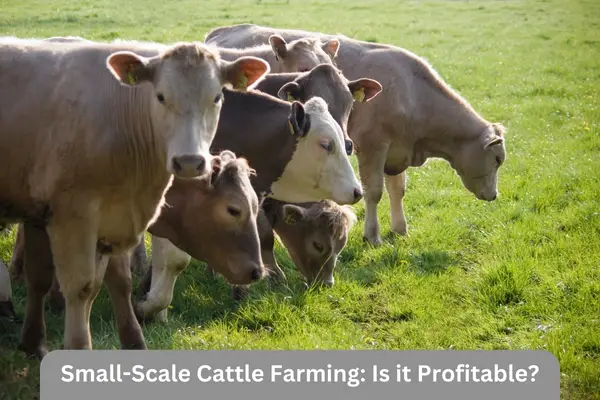
Acquire Your First Cattle
Once pastures and facilities stand ready, selecting the right cattle genetics tailored to your farm’s specialization gets your production off to a quality start. Here’s how to secure your foundation stock cost-effectively:
- Local Auctions – Attend livestock auctions to bid on healthy animals at fair market prices. Allows inspection not possible online.
- Direct from Other Farmers – Approach respected farms moving out of cattle production for bred cows or breeding bulls. Transfer knowledge too.
- Licensed Dealers – Order just a few animals first through licensed cattle brokers to establish your herd over time. Provides health guarantees.
Avoid overpaying for top-tier breeding genetics until your operations prove profitable. Seek quantity discounts when making larger cattle purchases as well to maximize initial investment value.
Whether buying pregnant cows, heifers, calves or bulls, a trusted large animal veterinarian should examine each animal before transporting home. This prevents bringing hidden health issues onto your new farm. Quarantine new arrivals several weeks before mixing with current cattle too.
Implement Production Best Practices
With trusted livestock, suitable facilities and grazing lands in place, now the real work begins – efficiently raising quality cattle. Follow these proven practices for healthy, productive operations:
- Rotational Grazing – Move cattle between multiple smaller pastures allowing grass regrowth. Supplement with extra cut hay in winter months.
- Breed Management – Track breeding cycles closely and segregate expecting mothers for special care pre- and post-calving when most vulnerable.
- Herd Health – Maintain detailed health records for each animal. Administer immunizations and treat minor issues promptly under vet supervision.
- Nutrition & Feed – Test grazing grasses and water sources regularly. Provide supplemental feed to balance any nutritional shortcomings.
- Safe Handling – Use low-stress handling practices, instilling calm trust between the animals and their caretakers. Fear triggers health declines.
- Predator Protection – Install electric perimeter fencing and supervise calves closely during the calving season when they are most vulnerable to coyotes and roaming dogs in rural areas.
- Pasture Management – Continually improve pasture quality by overseeding with legumes, monitoring weed/brush overgrowth which reduces grazing nutrition, and properly fertilizing organically with natural compost or cattle manure.
Make written standard operating procedures around each facet of cattle management, from breeding goals, veterinary protocols, and sales planning to nutrition, waste management, and seasonal grazing practices.
Committing proven systems to the paper ensures consistency in applying best practices across changing seasons and caretaker staff.
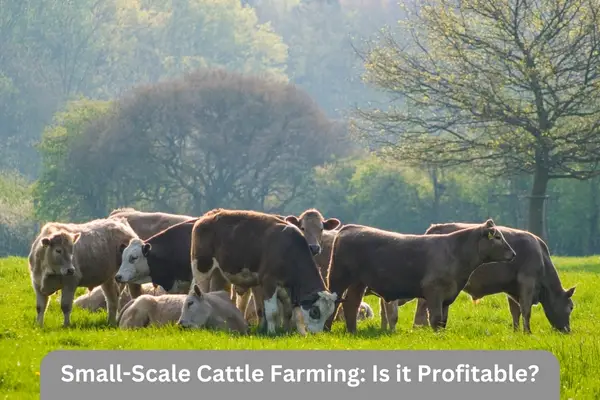
Bring in the Money – Marketing Beef for Profit
After investing in quality cattle, pastures, facilities and operational management, the cattle farmer’s moment of truth arrives – converting their herd investment into profitable beef sales.
Small operations relying on commodity cattle prices struggle to break even. But by direct marketing your farm’s story and premium beef quality, margins explode. Here are 5 tips for profiting from your packaged beef:
- Process On-Farm – Invest in USDA-approved meat processing equipment to harvest and package your beef on-site. This captures more profit while providing services to neighboring farms.
- Sell Custom Cuts – Skip feedlots and auction houses taking huge cuts. Direct market your packaged steaks, roasts, sausages and custom cuts to consumers and restaurants able to appreciate premium quality beef.
- Share the Story – Communicate your unique cattle farm history, commitment to sustainability, healthy grass-fed practices, and humane animal care through your packaging and marketing.
- Offer Volume Discounts – Entice families, buying groups and chefs to purchase bulk 10lb, 25lb and 50lb freezer packs of your premium beef once or twice per year. Provide special pricing tiers to incentivize this longer-term planning which gives your farm reliable year-round cash flow.
- Get the Word Out – Promote your beef shares and cuts through social media, email newsletters to customer lists, advertising in health foods magazines, hosting farm tours and tastings, and participate in farmers markets to connect consumers directly with the source of their food.
Creatively marketing your small farm beef as a premium, responsibly raised product differentiated on quality and care taps into booming health-conscious consumer demand happy to support regenerative, local food systems.
By transparently sharing your inspiring cattle farm’s purpose and products directly with customers, you cultivate lasting connections that turn one-time purchasers into passionate brand advocates.
The Satisfactions of Small-Scale Cattle Farming
While this guide focuses heavily on dollars and cents, small cattle farming offers so much more than profit to those called to steward the land and their animals. Other deeply fulfilling rewards come from:
- Watching new calves take their first steps in open pastures.
- Developing bonds with animals in your care based on trust and respect.
- Keeping heritage breeds and bloodlines thriving for future generations.
- Healing your own land’s soil, grasses and ecosystems through regenerative grazing.
- Providing your children with immersive rural education and responsibility.
- Delighting in flavorful, more ethical beef raised humanely right down the road.
- Building community around locally-oriented food systems.
- Sustaining family farmland legacies passed down generations.
Beyond financial security, small-scale cattle farming infuses rural producers’ days with the profound purpose protecting ancestral knowledge, instilling ethical food values in future leaders, safeguarding cherished farmscapes from development, and nourishing their neighbors with clean meat full of soul.
That deeper significance and satisfaction cattle farmers take from their land and animals fuel passionate perseverance even in challenging seasons that commodity-scale operations solely reliant on efficiency and margins often lose over time.
If you feel farming calling, take heart that a small cattle farm focused on quality over quantity can still sustain the livelihoods and legacies of forebears who began this stewardship before us.
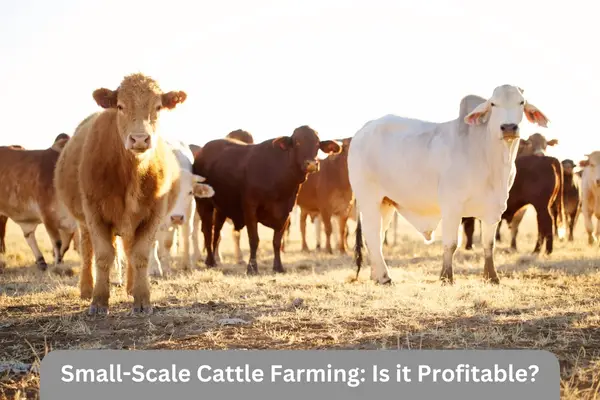
Keys to Success for Small Cattle Farms
Given the tight margins and high expenses involved with cattle farming, optimizing every aspect of a small-scale operation is imperative to remain viable over the long term. Here are 5 core best practices to follow:
- Start Lean & Smart – Minimize initial debt by buying only essential cattle, land, and gear to establish positive cash flow as soon as possible. Then, re-invest profits to expand sustainably.
- Lock Down Sales Channels – Line up reliable marketing outlets for your beef before buying cattle. Control sales relationships and pricing through direct, local channels first with additional commodity backup.
- Focus Your Operations – Pick a specialty like 100% grass-fed, heritage breed or certified organic beef production and build farm processes to effectively deliver that niche value. Don’t chase markets with mixed, inconsistent quality.
- Manage Costs Ruthlessly – Track detailed profitability metrics for each animal and grazing land. Trim expenses through lean practices like rotational grazing, bulk feed purchases, and preventative health management.
- Develop Loyal Customers – Market directly to local consumers and chefs. Host tastings, tours, and events on-farm.Engage through social media and email channels. Know your clients and deliver exactly what they value most.
Conclusion:
Can small beef cattle farms still provide viable full-time incomes for farm families today? The numbers confirm that raising 50-100 cattle focusing on premium beef sold direct to loyal customers can reliably return $50,000 – $150,000 in annual net profits. Additionally, sustainably grazing cattle builds healthy grassland ecosystems while supporting local food systems.
Through smart leveraging of scale, efficiency and relationships, small-scale cattle farmers can sustain profitable operations for years to come. What options might work best to start your own cattle farm vision? Let us know in the comments below!

